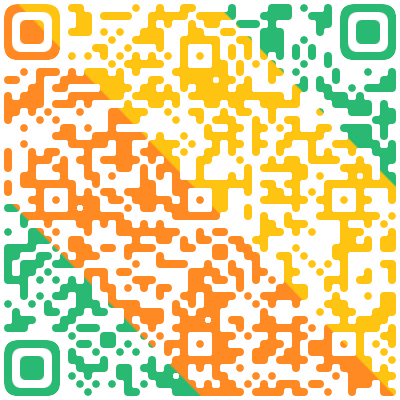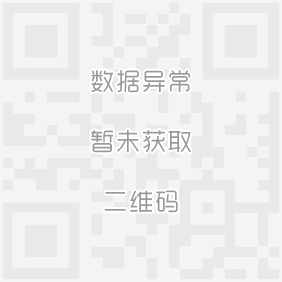在Access中,用
查看答案
相关试题
换一换


以下是常见的CMS,其中用ASP+ACCESS开发的CMS是()
A.PHPCMS B.Wordpress C.SDCMS D.DEDECMS
答案
在Access中,表中用来惟一标识每个记录的字段或多个字段的组合称为()
答案
Access数据库是由表、查询、窗体、报表、宏和模块等对象组成的,创建数据库,首先要创建表,因为表是Access数据库中用来储存数据的对象,是数据库的基石。
答案
List six access technologies. Classify each one as home access, enterprise access, or wide-area wireless access.
答案
System and application access control is to prevent()access to systems and applications . Access to information and application system functions shall be restricted in accordance with the access cont
A.physical B.special C.authorized D.unauthorized
答案
__是Access中用户通过显示器对数据库进行操作的工作界面,既可以显示信息,也可以输入数据,其内可包含各种控件()
A.表 B.查询 C.窗体 D.报表
答案
若 ss$="Access据库实用教程",则 Left(ss,6) & Right(ss,4)的值是: Access实用教程|Access教程|Access数据库实用教程|Access数据库教程
答案
在Access中,用户界面由Access窗口和()窗口组成
答案
The meaning of ( )is that access to protected information must be restricted to people who are authorized to access the information.
A.digital signature B.encryption technology C.access control D.authentication technology
答案
The meaning of ( ) is that access to protected information used be restricted to people who are authorized to access the information.
A.digital signature B.encryption technology C.access control D.authentication technology
答案
热门试题
Access属于()。
Open Access
access意思__
Access窗口
To access the Web, users require a _____, which is the software program used to access the World Wide Web.
In the fields of physical security and information security, access control is the selective restriction of access to a place or other resource. The act of accessing may mean consuming, entering, or using. Permission to access a resource is called authorization (授权). An access control mechanism ( ) between a user (or a process executing on behalf of a user) and system resources, such as applications, operating systems, firewalls, routers, files, and databases. The system must first authenticate (验证) a user seeking access. Typically the authentication function determines whether the user is ( ) to access the system at all. Then the access control function determines if the specific requested access by this user is permitted. A security administrator maintains an authorization database that specifies what type of access to which resources is allowed for this user. The access control function consults this database to determine whether to ( ) access. An auditing function monitors and keeps a record of user accesses to system resources. In practice, a number of ( ) may cooperatively share the access control function. All operating systems have at least a rudimentary (基本的) , and in many cases a quite robust, access control component. Add-on security packages can add to the ( 此空作答 ) access control capabilities of the OS. Particular applications or utilities, such as a database management system, also incorporate access control functions. External devices, such as firewalls, can also provide access control services.
In the fields of physical security and information security, access control is the selective restriction of access to a place or other resource. The act of accessing may mean consuming, entering, or using. Permission to access a resource is called authorization (授权). An access control mechanism ( ) between a user (or a process executing on behalf of a user) and system resources, such as applications, operating systems, firewalls, routers, files, and databases. The system must first authenticate (验证) a user seeking access. Typically the authentication function determines whether the user is ( ) to access the system at all. Then the access control function determines if the specific requested access by this user is permitted. A security administrator maintains an authorization database that specifies what type of access to which resources is allowed for this user. The access control function consults this database to determine whether to ( ) access. An auditing function monitors and keeps a record of user accesses to system resources. In practice, a number of (此空作答 ) may cooperatively share the access control function. All operating systems have at least a rudimentary (基本的) , and in many cases a quite robust, access control component. Add-on security packages can add to the ( ) access control capabilities of the OS. Particular applications or utilities, such as a database management system, also incorporate access control functions. External devices, such as firewalls, can also provide access control services.
In the fields of physical security and information security, access control is the selective restriction of access to a place or other resource. The act of accessing may mean consuming, entering, or using. Permission to access a resource is called authorization (授权). An access control mechanism () between a user (or a process executing on behalf of a user) and system resources, such as applications, operating systems, firewalls, routers, files, and databases. The system must first authenticate (验证) a user seeking access. Typically the authentication function determines whether the user is ( ) to access the system at all. Then the access control function determines if the specific requested access by this user is permitted. A security administrator maintains an authorization database that specifies what type of access to which resources is allowed for this user. The access control function consults this database to determine whether to (请作答此空 ) access. An auditing function monitors and keeps a record of user accesses to system resources. In practice, a number of ( ) may cooperatively share the access control function. All operating systems have at least a rudimentary (基本的) , and in many cases a quite robust, access control component. Add-on security packages can add to the ( ) access control capabilities of the OS. Particular applications or utilities, such as a database management system, also incorporate access control functions. External devices, such as firewalls, can also provide access control services.
In the fields of physical security and information security, access control is the selective restriction of access to a place or other resource. The act of accessing may mean consuming, entering, or using. Permission to access a resource is called authorization (授权). An access control mechanism ( ) between a user (or a process executing on behalf of a user) and system resources, such as applications, operating systems, firewalls, routers, files, and databases. The system must first authenticate (验证) a user seeking access. Typically the authentication function determines whether the user is ( 此空作答 ) to access the system at all. Then the access control function determines if the specific requested access by this user is permitted. A security administrator maintains an authorization database that specifies what type of access to which resources is allowed for this user. The access control function consults this database to determine whether to ( ) access. An auditing function monitors and keeps a record of user accesses to system resources. In practice, a number of ( ) may cooperatively share the access control function. All operating systems have at least a rudimentary (基本的) , and in many cases a quite robust, access control component. Add-on security packages can add to the ( ) access control capabilities of the OS. Particular applications or utilities, such as a database management system, also incorporate access control functions. External devices, such as firewalls, can also provide access control services.
In the fields of physical security and information security, access control is the selective restriction of access to a place or other resource. The act of accessing may mean consuming, entering, or using. Permission to access a resource is called authorization (授权). An access control mechanism ( 此空作答 ) between a user (or a process executing on behalf of a user) and system resources, such as applications, operating systems, firewalls, routers, files, and databases. The system must first authenticate (验证) a user seeking access. Typically the authentication function determines whether the user is ( ) to access the system at all. Then the access control function determines if the specific requested access by this user is permitted. A security administrator maintains an authorization database that specifies what type of access to which resources is allowed for this user. The access control function consults this database to determine whether to ( ) access. An auditing function monitors and keeps a record of user accesses to system resources. In practice, a number of ( ) may cooperatively share the access control function. All operating systems have at least a rudimentary (基本的) , and in many cases a quite robust, access control component. Add-on security packages can add to the ( ) access control capabilities of the OS. Particular applications or utilities, such as a database management system, also incorporate access control functions. External devices, such as firewalls, can also provide access control services.
在Access2010中,默认的文件格式为Access2010()
They tried to restrict access to
Have easy access to
Access数据库具有很多特点,下列叙述中,不是Access特点的是( )
在Access中,用
关于access字段属性
Access2010是()
Access中的报表()
交换机所有端口默认是access模式,下面对access模式描述正确的事()
Information is no good to you if you can"t ( ) it.The location dimension of information means having access to access to information no where you are.



 使用微信扫一扫登录
使用微信扫一扫登录